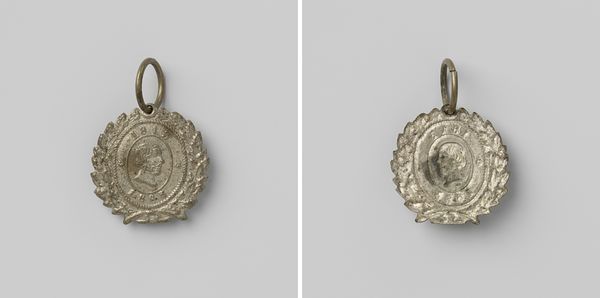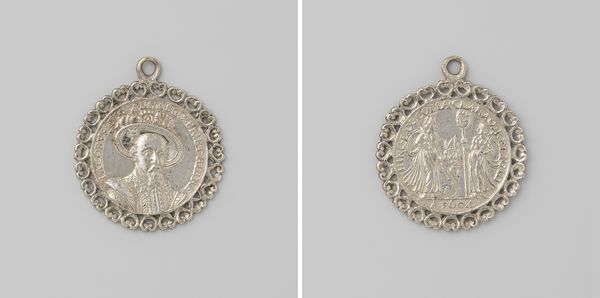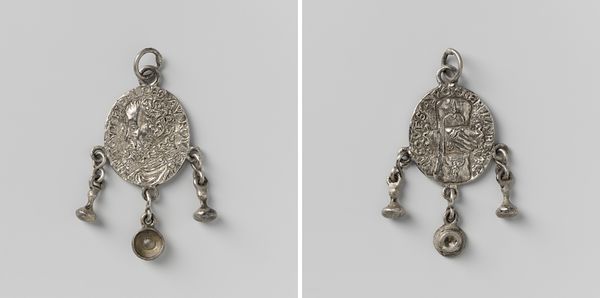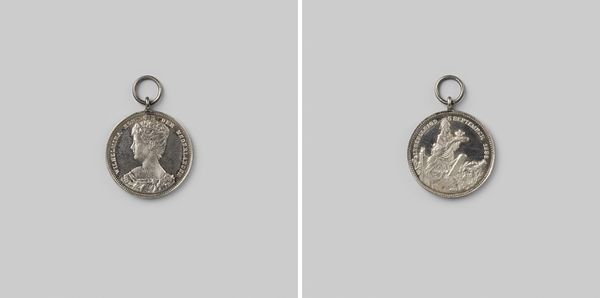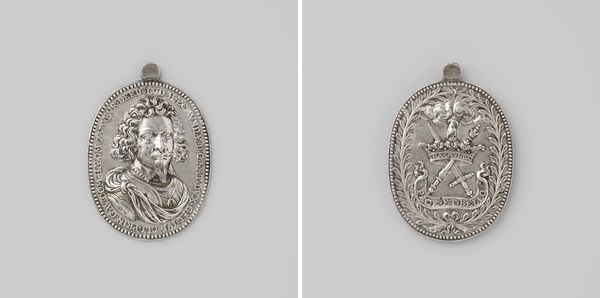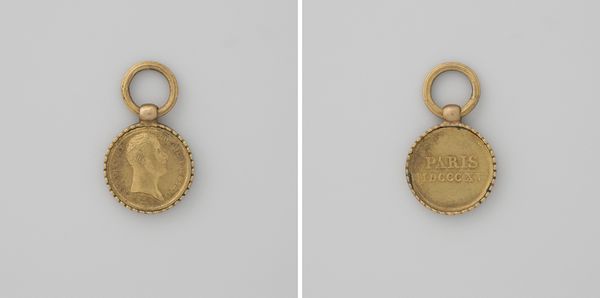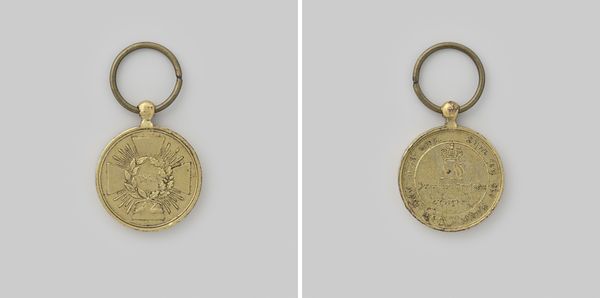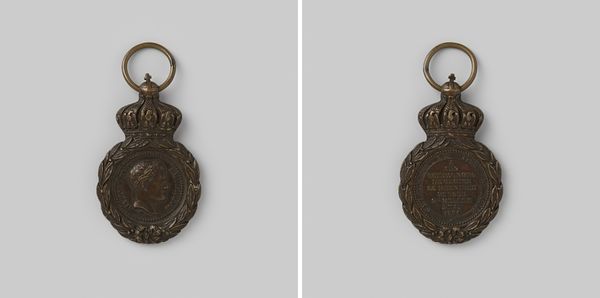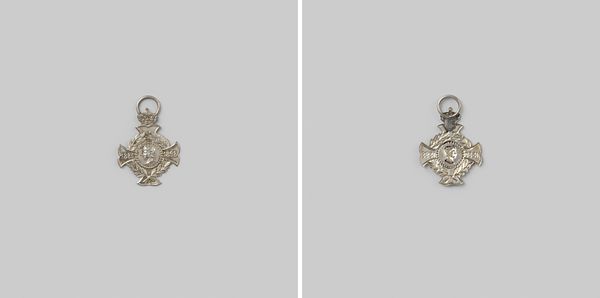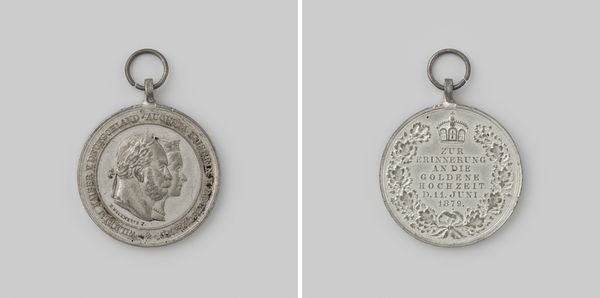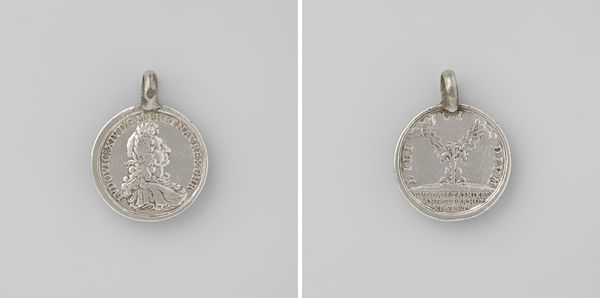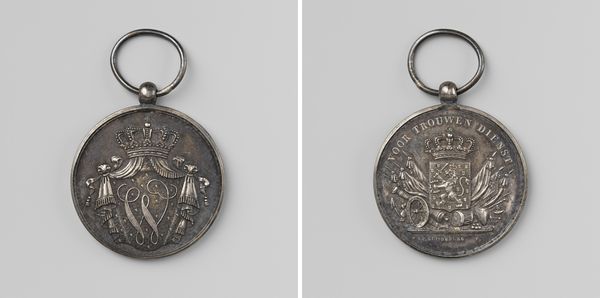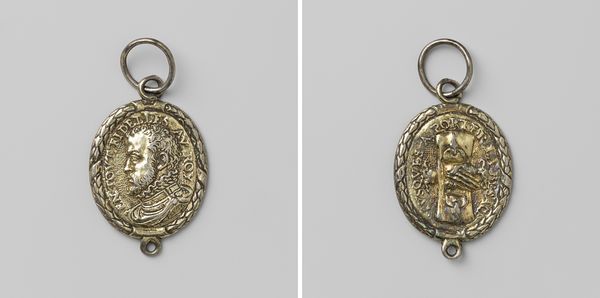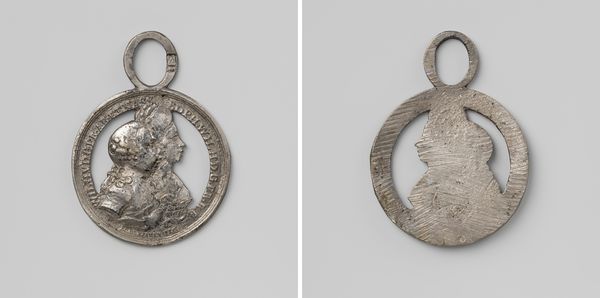
slag bij Doggersbank, penning door Willem V, prins van Oranje-Nassau aan de zeelieden vereerd 1781
0:00
0:00
Dimensions: length 2.8 cm, length 1.9 cm, length 1.6 cm, width 1.1 cm, weight 2.16 gr
Copyright: Rijks Museum: Open Domain
Editor: So this medal, “Slag bij Doggersbank”, created by Johann Heinrich Schepp in 1781, it looks like bronze or some kind of metal relief. The details are remarkable for something so small. How were these types of commemorative medals produced and what does that say about its place in society? Curator: Let's consider this medal within the context of late 18th-century Dutch society. The creation of commemorative medals such as this one was a complex process, often involving skilled artisans working within established guild systems. Do you think the value was intrinsic, as a display of power, or utilitarian? Editor: I guess both, it's something durable to keep, to carry the meaning into the future. Curator: Precisely. The medal's materiality – the specific bronze alloy used, the techniques of its casting and finishing – all speak to the social and economic conditions of its production. The investment in skilled labor and costly materials suggests that these objects were intended to convey authority. How does the imagery reinforce this? Editor: Well, the battle imagery and portrait link the naval victory to the power of the Oranje-Nassau dynasty. But how accessible were these medals? Would they only be for wealthy people or available for lower ranks of society as well? Curator: The production of these medals depended heavily on patronage and intended recipients. For common seamen who fought in the battle, it's likely the medal would represent delayed compensation of sorts, as payment for their hard work during the war, with distribution functioning as propaganda to sustain their support. Does knowing this, make you think differently about its importance? Editor: It does. It shifts my focus away from just artistic merit and more towards how metal itself could be used as a political tool or a reward. This was a clever method to disseminate political power among many levels of society. Curator: Exactly, so even seemingly small-scale artifacts like this medal reflect broader systems of power, labor, and social relations. I think this way we can look at almost any object. Editor: Yes! Thank you; I'll definitely consider material conditions in my work moving forward.
Comments
No comments
Be the first to comment and join the conversation on the ultimate creative platform.
